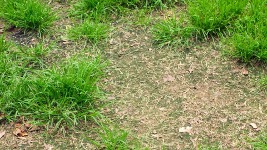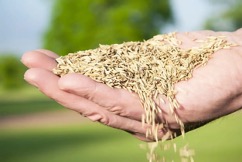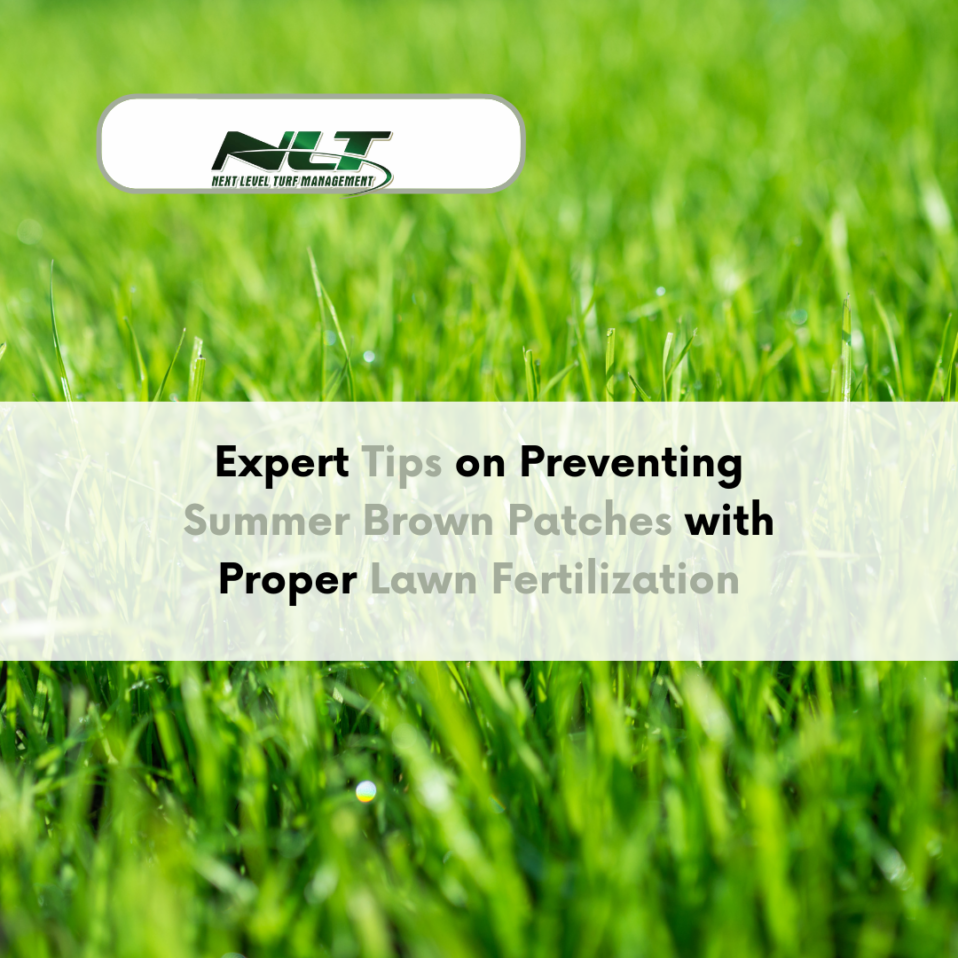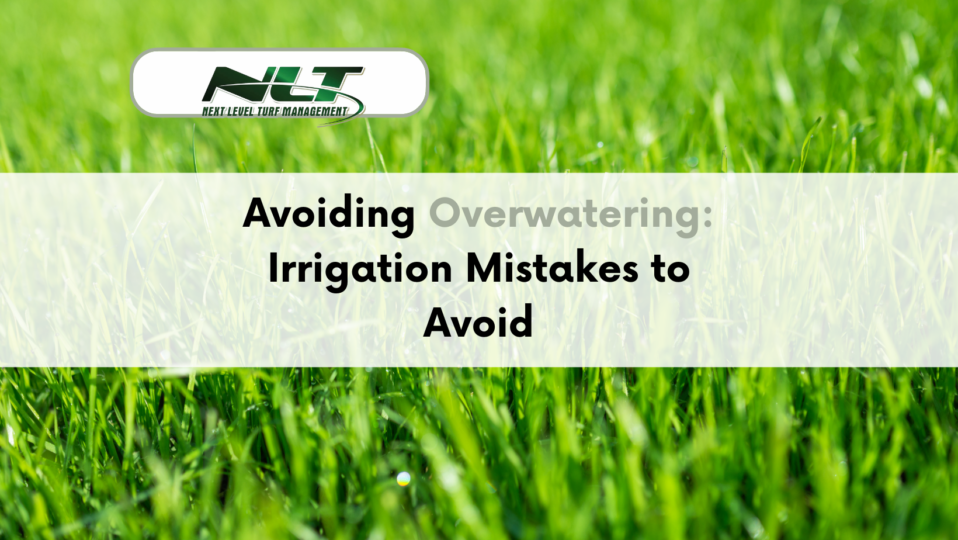Summer in Central Florida brings not only warm, sunny days but also the potential for unsightly brown patches on your otherwise pristine lawn. These patches can appear seemingly overnight and can quickly spread, turning your lush green grass into a patchy, brown eyesore. Understanding the root causes and implementing effective prevention strategies is key to maintaining a healthy, vibrant lawn throughout the summer months.
In this article, we will delve into the various causes of summer brown patches and offer expert tips on using fertilization to combat and prevent them. Whether you’re a seasoned lawn care enthusiast or a new homeowner looking to maintain your yard, these insights will equip you with the knowledge and tools needed to keep your lawn looking its best all summer. Join us as we explore the science and art of effective lawn fertilization and learn how to protect your grass from the dreaded summer brown patches.
Understanding Brown Patches
Brown patches on lawns are caused by various factors, including fungal diseases, improper watering, and nutrient imbalances. These patches are most common during summer due to the heat and humidity that create an ideal environment for fungi. Identifying the specific cause of brown patches on your lawn is crucial for effective treatment and prevention.
Identifying Fungal Diseases
Fungal diseases are a primary cause of brown patches. One common disease is brown patch fungus, which thrives in warm, humid conditions. You’ll notice circular brown spots with a darker ring around the edges. Other fungi include dollar spots and leaf spots, which also cause discoloration and dead patches.
To confirm a fungal issue, inspect your grass closely. Look for symptoms like wilting, thinning, or specific patterns of browning. It’s essential to address fungal diseases quickly to prevent them from spreading across your lawn.

Proper Watering Techniques
Improper watering can lead to brown patches. Too much or too little water stresses the grass, making it susceptible to diseases and pests. In Central Florida’s summer, maintaining an optimal watering schedule is crucial.
Aim to water your lawn early in the morning. This allows the grass to absorb moisture before the heat of the day and prevents the growth of fungi that thrive in wet, dark conditions. Ensure your lawn receives about 1 inch of water per week, adjusting for rainfall.
Nutrient Imbalance and Fertilization
A lack of essential nutrients can weaken your grass, making it more prone to brown patches. Fertilization provides necessary nutrients that promote healthy growth and resilience. A balanced fertilizer containing nitrogen, phosphorus, and potassium will support your lawn’s overall health.
Apply fertilizer at the correct times throughout the year. In Central Florida, this typically means fertilizing in early spring and late summer. Follow the instructions on the fertilizer package to avoid over-fertilizing, which can harm your grass.
Aeration and Soil Health
Compacted soil restricts the flow of air, water, and nutrients to your grass roots. This can lead to brown patches as the grass struggles to grow in poor conditions. Aeration involves perforating the soil with small holes to allow air, water, and nutrients to penetrate the roots more effectively.
Aerate your lawn at least once a year. For the best results, aim for early spring or fall when the grass is actively growing. This will keep your soil healthy and support robust grass growth, reducing the likelihood of brown patches.
Mowing Practices for Lawn Health
Incorrect mowing practices can also contribute to the development of brown patches. Cutting your grass too short weakens it, making it more vulnerable to stress and disease. In Central Florida, consider these mowing tips for optimal lawn health:
Maintaining the Right Grass Height
Keep your grass at a height where it can shade the soil, reducing evaporation and keeping the ground cool. For most turf types in Central Florida, maintaining a height of 2.5 to 3 inches is ideal. Never remove more than one-third of the grass blade at a time, as this can shock the grass and hinder its growth.
Sharp Mower Blades
Mowing with dull blades tears the grass, creating jagged edges that make the lawn more susceptible to diseases. Ensure your mower blades are sharp, and regularly check and maintain them for the best cut possible.
Regular Weed Control
Weeds compete with your grass for nutrients, water, and light. They can weaken your lawn, making it more prone to brown patches. Regular weed control is essential in preventing these issues.
Removing Invasive Plants
Manual weeding can be effective for minor infestations. However, for larger areas, consider using weed control products specifically designed for your grass type. Follow the instructions carefully to avoid damaging your lawn.
Pre-Emergent Herbicides
Pre-emergent herbicides prevent weed seeds from germinating. Apply these in early spring to get ahead of weed growth and keep your lawn healthy.
Insect and Pest Management
Insects and pests can cause significant damage to your lawn, resulting in brown patches. Common pests in Central Florida include chinch bugs, sod webworms, and grubs. Regular monitoring and prompt action are key to managing these pests.
Identifying Pest Damage
Look out for signs like wilting grass, irregular brown patches, or visible larvae in the soil. Certain pests can quickly eat away at your lawn, so early detection is crucial.
Implementing Pest Control Measures
Use pest control products designed for your specific lawn type and pest problem. Follow the instructions carefully and consider consulting a professional for severe infestations to protect your lawn from further damage.
By addressing these factors—fungal diseases, watering techniques, nutrient balance, soil health, mowing practices, weed control, and pest management—you can effectively prevent and treat brown patches on your lawn. Implementing these expert tips will support a lush, green lawn throughout the summer.
Understanding Soil pH and Fertility
Soil pH plays an essential role in the health and color of your lawn. It measures how acidic or alkaline your soil is, which affects nutrient availability. Grass generally thrives in a slightly acidic to neutral pH range, between 6.0 and 7.0.
If your soil’s pH is out of this range, it can cause nutrient imbalances and lead to brown patches. Conduct a soil test to determine your pH level. Based on the results, you might need to adjust the pH using lime (to raise pH) or sulfur (to lower pH). Maintaining the right soil pH ensures that nutrients from your fertilizer are available to the grass, promoting healthy growth and preventing brown spots.
Seasonal Fertilization Timing
Applying fertilizer at the correct times is crucial for preventing summer brown patches. Central Florida’s unique climate requires a specific fertilization schedule to address nutrient needs effectively.
Spring Fertilization: In early spring, fertilize with a formula rich in nitrogen. This supports early growth and helps the grass recover from winter dormancy.
Summer Fertilization: In mid-summer, use a balanced fertilizer with a controlled-release formula. This ensures steady nutrient supply during the hot months without causing excessive growth that can stress the grass.
Fall Fertilization: Apply a fertilizer high in potassium in late summer or early fall. Potassium helps strengthen the grass as it prepares for cooler weather, contributing to better overall health.
Selecting the Right Fertilizer
Choosing the correct fertilizer for your lawn’s needs is vital for preventing brown patches. Fertilizers contain three primary nutrients: nitrogen (N), phosphorus (P), and potassium (K). The ratio of these nutrients is indicated on the fertilizer bag as N-P-K numbers.
Nitrogen: Essential for leaf growth and green color, nitrogen is the most critical nutrient for grass. However, too much nitrogen can burn the grass and lead to brown patches. Controlled-release nitrogen fertilizers provide a steady supply of nutrients, reducing the risk of over-fertilization.
Phosphorus: Important for root development and overall plant health, phosphorus is less commonly needed in large amounts for established lawns. Check local regulations, as some areas restrict phosphorus use due to environmental concerns.
Potassium: Enhances disease resistance and overall vigor in grass, potassium is vital for preventing stress-related brown patches. Choose fertilizers with adequate potassium levels, especially during stressful summer months.
Organic vs. Synthetic Fertilizers
Understanding the differences between organic and synthetic fertilizers can help you make an informed choice for your lawn.
Organic Fertilizers: Made from natural materials like compost, manure, and bone meal, organic fertilizers release nutrients slowly as they break down. This slow release benefits long-term soil health and reduces the risk of nutrient leaching. However, organic fertilizers may not provide a quick nutrient boost if your lawn shows immediate signs of distress.
Synthetic Fertilizers: Chemically formulated, synthetic fertilizers offer a quick nutrient release. They can immediately address nutrient deficiencies, but there’s a higher risk of over-application and nutrient runoff. Synthetic fertilizers are ideal for addressing specific issues but should be used carefully to avoid negatively impacting soil health.
Addressing Compaction with Aeration
Soil compaction is a common problem in lawns, particularly in areas with heavy foot traffic. Compacted soil prevents air, water, and nutrients from reaching the grass roots, leading to weak growth and brown patches. Aeration helps alleviate compaction and improves soil structure.
Core Aeration: The most effective aeration method, core aeration involves removing small plugs of soil from the lawn. These plugs break down over time, redistributing nutrients and improving soil health. Perform core aeration in early spring or fall when the grass is actively growing.
Spike Aeration: Spike aeration uses solid tines or spikes to create holes in the soil. While it offers less improvement in soil structure than core aeration, it can be useful for temporarily alleviating minor compaction issues.
Overseeing Repairing Damaged Areas
If you already have brown patches, overseeding can help repair the damage. Overseeding involves spreading grass seed over existing grass, promoting new growth that can fill in bare or damaged areas.
Choosing the Right Seed: Select grass seed that matches your existing lawn type to ensure uniform growth. In Central Florida, warm-season grasses like Bermuda, Zoysia, and St. Augustine are popular choices.

Proper Seeding Technique: Prepare the soil by mowing the lawn short and raking away debris. Spread the seed evenly using a broadcast spreader, and lightly rake it into the soil for good seed-to-soil contact. Keep the soil consistently moist until the new grass is established, then gradually return to regular watering practices.
Regular Lawn Maintenance
Ongoing maintenance practices play a significant role in preventing and treating brown patches. Consistent care strengthens your lawn and enhances its resistance to stress and disease.
Mowing Practices: Mow your lawn regularly, following the one-third rule: never remove more than one-third of the grass blade height at a time. Maintain sharp mower blades to prevent tearing the grass, which can make it susceptible to disease.
Watering Techniques
Proper watering is essential for a healthy lawn. Water deeply and infrequently to encourage deep root growth. Early morning watering helps reduce evaporation and allows the grass to dry before evening, lowering the risk of fungal diseases.
By understanding these key aspects of lawn health and maintenance, you can implement targeted strategies to prevent and treat brown patches during the summer. Focusing on proper fertilization, soil health, watering practices, and routine care will keep your lawn vibrant and healthy throughout the season.
Pest Management to Prevent Brown Patches
Insects and pests can wreak havoc on your lawn, causing significant damage that manifests as brown patches. Common pests like chinch bugs, grubs, and sod webworms feed on grass roots and blades, weakening the lawn. Effective pest management strategies are necessary to keep your grass healthy.
Chinch Bugs: Chinch bugs are tiny insects that suck the sap from grass blades, leading to wilting and browning. They thrive in hot, dry conditions. To manage chinch bugs, maintain a healthy lawn, use proper irrigation practices, and consider using insecticides if infestations are severe.
Grubs: Grubs are the larvae of beetles and live in the soil, where they feed on grass roots. This results in dead patches that can be peeled back like a carpet. Regular monitoring and the application of grub control products can help keep grub populations in check.
Sod Webworms: These pests are the larvae of moths and feed on grass blades, leaving small brown patches. Monitor for webworm activity by looking for moths in the evening and using a soapy water solution to flush larvae out of the grass. Insecticides can be used for severe infestations.
Improving Drainage
Poor drainage can create waterlogged conditions that encourage fungal growth and weaken grass roots, leading to brown patches. Improving soil drainage is important for maintaining a healthy lawn.
Aeration: Regular aeration helps break up compacted soil, allowing water to penetrate more deeply. This reduces surface water accumulation and improves root health.
Topdressing: Apply a thin layer of sand or compost over your lawn to improve soil structure and drainage. Topdressing helps create a more favorable environment for grass growth by enhancing soil aeration and water infiltration.
Grading: Ensure that your lawn has a gentle slope away from buildings and structures to promote proper water runoff. Re-grading problem areas can prevent water from pooling and reduce the risk of brown patches.
Dethatching for Healthier Grass
Thatch is a layer of dead grass and organic matter that accumulates between the soil and the grass blades. A thick thatch layer can prevent water, air, and nutrients from reaching the grass roots, leading to brown patches. Dethatching removes this layer and promotes healthier grass growth.
Thatch Assessment: Assess the thickness of the thatch layer by digging into your lawn and measuring it. If the thatch layer is more than half an inch thick, it’s time to dethatch.
Dethatching Methods: Use a dethatching rake or a power dethatcher to remove the thatch. Rake up and dispose of the debris. Dethatching can be stressful for your lawn, so it’s best done in early spring or fall when the grass is actively growing.
Fertilization Tips for Different Grass Types
Different types of grass have unique nutrient needs and fertilization requirements. Understanding these needs ensures that you provide the right fertilization for your specific grass type, helping to prevent brown patches.
Bermuda Grass: Bermuda grass thrives in warm climates and requires frequent fertilization. Apply a high-nitrogen fertilizer every 4 to 6 weeks during the growing season. This promotes dense growth and helps prevent brown spots.
St. Augustine Grass: St. Augustine grass prefers balanced fertilizers with equal parts nitrogen, phosphorus, and potassium. Fertilize every 6 to 8 weeks during the growing season to maintain lush, green growth.
Zoysia Grass: Zoysia grass has moderate fertilization needs. Use a balanced fertilizer every 6 to 8 weeks and avoid over-fertilizing, as this can lead to thatch buildup and increased disease susceptibility.
Benefits of Slow-Release Fertilizers
Slow-release fertilizers provide nutrients over an extended period, promoting steady grass growth and reducing the risk of nutrient leaching. They offer several benefits for preventing brown patches.
Consistent Nutrient Supply: Slow-release fertilizers ensure that your grass receives a consistent supply of nutrients, promoting healthy growth and reducing the risk of nutrient deficiencies that can cause brown patches.
Reduced Fertilizer Burn: Because nutrients are released gradually, slow-release fertilizers are less likely to cause fertilizer burn, which can damage grass and lead to brown spots.
Environmental Benefits: Slow-release fertilizers minimize nutrient runoff, reducing the environmental impact of fertilization. This helps protect local water sources and promotes sustainable lawn care practices.
Importance of Soil Testing
Regular soil testing provides essential information about your lawn’s nutrient levels and pH balance. This data allows you to make informed decisions about fertilization and other lawn care practices, helping to prevent brown patches.
Testing Frequency: Conduct soil tests every 2 to 3 years or more frequently if you notice persistent lawn issues. Soil tests are available through garden centers, extension services, and lawn care professionals.
Interpreting Results: Use the soil test results to identify nutrient deficiencies and pH imbalances. Follow the recommendations provided with the test results to adjust your fertilization and soil amendment practices accordingly.
Implementing Cultural Practices
Cultural practices encompass routine lawn care activities that promote overall grass health and resilience, reducing the likelihood of brown patches.
Mowing: Maintain proper mowing height and frequency to keep your grass healthy. Sharpen mower blades regularly to ensure clean cuts, and mow when the grass is dry to prevent disease spread.
Watering: Water deeply and infrequently, aiming for about 1 inch of water per week. Adjust your watering schedule based on rainfall and seasonal conditions to prevent overwatering or underwatering.
Lawn Cleanliness: Remove debris, such as leaves and grass clippings, to prevent the buildup of thatch and reduce the risk of fungal diseases. Keep your lawn free of clutter to promote healthy air circulation and sunlight exposure.
Achieving a Lush, Green Lawn
Maintaining a healthy, vibrant lawn free of brown patches requires attention to detail and consistent care. Understanding the importance of proper fertilization, effective pest management, and regular lawn maintenance will help keep your lawn in top condition. By following these strategies, you can tackle and prevent brown patches, ensuring your grass stays lush and green throughout the summer.
At Next Level Turf, we are dedicated to helping you achieve the lawn of your dreams. Our expert services are designed to meet the unique needs of your lawn, providing professional fertilization and care tailored to keep your grass healthy and beautiful. Don’t let brown patches ruin your lawn—take action today and see the difference expert care can make.
Take Your Lawn to the Next Level
Ready to transform your lawn into a healthy, green oasis? Contact Next Level Turf for professional lawn care services tailored to your needs. Let our experts help you maintain a beautiful, vibrant lawn all year round. Reach out today to schedule a consultation and discover how we can elevate your lawn care to the next level.







Post a comment